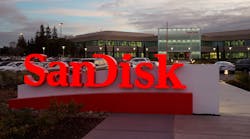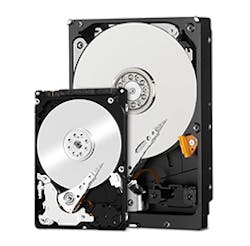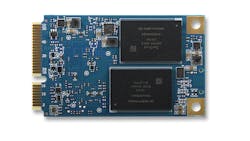Western Digital Buys SanDisk to Expand into Solid-State Memory
The wave of consolidation in the semiconductor market has surged into memory storage, as Western Digital has announced that it will purchase SanDisk for approximately $19 billion. Western Digital, a manufacturer of hard-disk drives (HDDs), said in an official statement that the purchase was made to expand its position in non-volatile memory (NVM) and solid-state drives (SSD).
The move, like other major transactions this year, has underlined the industry’s shift from personal computers to smartphones, tablets, and Internet of Things (IoT) devices. With SanDisk, Western Digital has acquired a wide range of flash-memory devices that are used not only in personal computer but also in smartphones, ultra-thin laptops, cameras, and data-center storage for cloud computing. Western Digital will also gain access to an ongoing venture between SanDisk and Toshiba, which has focused on developing NAND flash—and more specifically 3D-NAND flash—technology.
Shifting into solid-state memory technology around 2013, SanDisk has grown into the fourth largest manufacturer of flash memory in the world. Under the direction of CEO Sanjay Mehrotra, it captured approximately 14.8% of the market in 2014, according to the research firm IHS. In 2014, SanDisk earned revenues of $6.6 billion, operating NAND flash memory fabs in China, Japan, and Malaysia. Nevertheless, the company has struggled over the last year, with total revenues in third quarter of this year falling 16.9% compared to last year.
In recent years, Western Digital has developed several flash-memory drives, but most of its energy has been directed at HDD technology. Over the last year, however, analysts have warned that the market for personal computers is reaching maturity, especially in the United States, where high penetration rates are stifling further growth. With the SanDisk acquisition, “Western Digital gets to diversify their business into solid state,” says Angelo Zino, an analyst for S&P Capital, in an article from the Los Angeles Times.
The demand for NAND flash is expected to increase to 35% of the SSD market, up from the 30% demand in 2016, according to research firm Trendforce. Major companies, including Intel and Micron Technology, have started to invest more in solid-state drives. Intel recently announced that it would convert its processor plant in Dalian, China to fabricate 3D-NAND flash chips.
At the same time, there appears to be a certain level of friction between the demand for flash memory and the demand for devices using the technology. In addition to the slowing markets for personal computers and smartphones, the introduction of cloud computing will make memory storage more efficient and reduce the need for flash hardware, according to Handel Jones, chief executive of International Business Strategies, in an article with the Los Angeles Times.
The buyout is the latest in a torrent of mergers and acquisitions in the semiconductor market, as companies struggle with the rising cost of designing analog and mixed-signal chips. Intel, NXP Semiconductor, and Avago Technologies have stolen the spotlight for high-profile acquisitions this year, acquiring Altera, Freescale Semiconductor, and Broadcom Corp., respectively. These transactions alone totaled over $70 billion. Earlier this month, Dialog Semiconductor agreed to purchase Atmel for $4.6 billion.
Notwithstanding the major purchases in the semiconductor industry, the memory storage market has seen mergers and acquisitions totaling $89 billion this year. The largest deal came earlier this month, when Dell purchased EMC Corp. for a staggering $66 billion. In March, Western Digital acquired Hitachi Global Storage Technologies for $4.9 billion.
Western Digital paid $86.50 per share to acquire SanDisk, representing a 15% premium to the company’s closing price on October 21. The transaction, which has been approved by the board of directors of both companies, is subject to regulatory and shareholder approval and is expected to close in the third quarter of 2016.
Stephen Milligan, CEO of Western Digital, will remain in his role as chief executive, while Mehrotra is expected to join Western Digital’s board of directors, according to both companies. Western Digital will continue operating out of Irvine, Calif.



